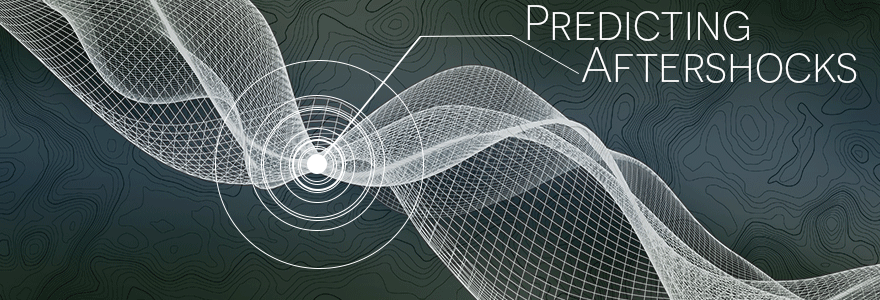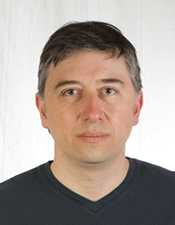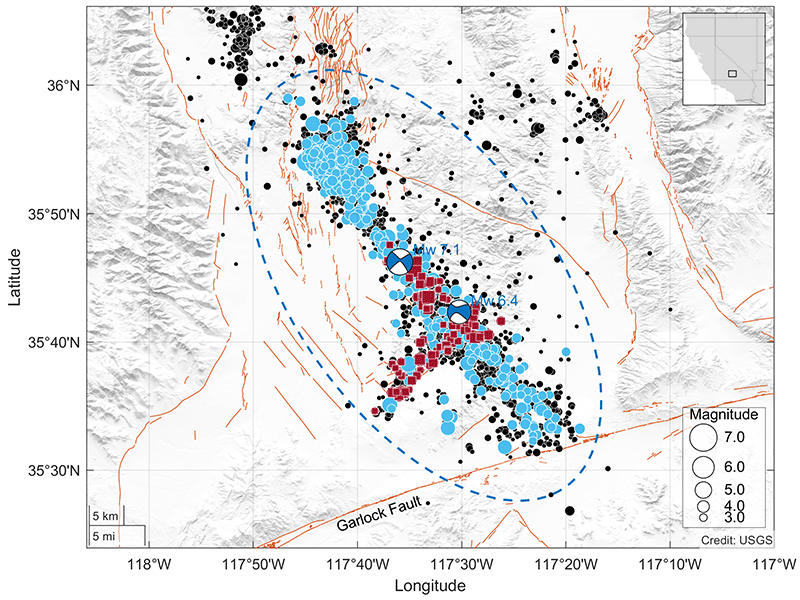Predicting Aftershocks

From the week’s weather to the century’s climate, forecasting and modelling tools are relatively well-understood devices to help us prepare for what the future holds, whether it be immediate or distant. But beyond these phenomena, predictive prowess of our physical surroundings seems to become a murky topic. From forest fires to meteor showers, being able to establish the probability of certain events is essential. But what about earthquakes? Canada’s most seismic regions, BC and Quebec, experience thousands of earthquakes a year – most of them imperceptible to people in the cities – however, the hazards of earthquakes remain a top concern for regional and federal authorities.
 “We are quite far away from being able to predict earthquakes the way we do with the week’s weather,” remarks Robert Shcherbakov of the Department of Earth Sciences, “but we’re getting closer!” Shcherbakov and his research group have built a forecasting algorithm to help assign a probability to the largest aftershocks occurring after a significant earthquake. “Following a seismic event, there can be a strong follow-up earthquake that does further damage to already compromised structures,” explains Shcherbakov. Aftershocks occur any time between hours to weeks, to even years after the initial shock. For rescue and clean-up efforts, these secondary events can wreak further devastation during a period when buildings are already vulnerable.
“We are quite far away from being able to predict earthquakes the way we do with the week’s weather,” remarks Robert Shcherbakov of the Department of Earth Sciences, “but we’re getting closer!” Shcherbakov and his research group have built a forecasting algorithm to help assign a probability to the largest aftershocks occurring after a significant earthquake. “Following a seismic event, there can be a strong follow-up earthquake that does further damage to already compromised structures,” explains Shcherbakov. Aftershocks occur any time between hours to weeks, to even years after the initial shock. For rescue and clean-up efforts, these secondary events can wreak further devastation during a period when buildings are already vulnerable.
Shcherbakov and his research group have built an advanced algorithm that learns with new data generated after each new earthquake. “Currently, government agencies calculate the probability for the occurrence of aftershocks based on a frequentist approach – this is basically how we think about the odds of rolling a dice or getting tails on a coin flip,” he explains. His group’s model forecasts the chance of an aftershock within the first days and weeks following a main earthquake by employing the Bayesian approach, which takes into account how previous events have happened. To test the model, Shcherbakov and his colleagues use the earthquake data, from Alaska to New Zealand, to gather information on the many types of seismic activities happening beneath our feet.
Figure 1 (Below): Map of aftershock sequence in California during the 2019 Ridgecrest earthquakes
 “By studying new earthquake sequences, our models will continue to improve,” says Shcherbakov. Currently, the group is studying the earthquake data from a Californian earthquake in 2019 that caused significant damage to a remote US Air Force base. “Our goal is to eventually have these models used by government agencies to help them coordinate evacuation and rescue efforts.” With a more advanced method to calculate earthquake probabilities, agencies in major metropolitan areas, like Vancouver, will have a better understanding of when it’s safe to return to regular activities after a strong earthquake.
“By studying new earthquake sequences, our models will continue to improve,” says Shcherbakov. Currently, the group is studying the earthquake data from a Californian earthquake in 2019 that caused significant damage to a remote US Air Force base. “Our goal is to eventually have these models used by government agencies to help them coordinate evacuation and rescue efforts.” With a more advanced method to calculate earthquake probabilities, agencies in major metropolitan areas, like Vancouver, will have a better understanding of when it’s safe to return to regular activities after a strong earthquake.

